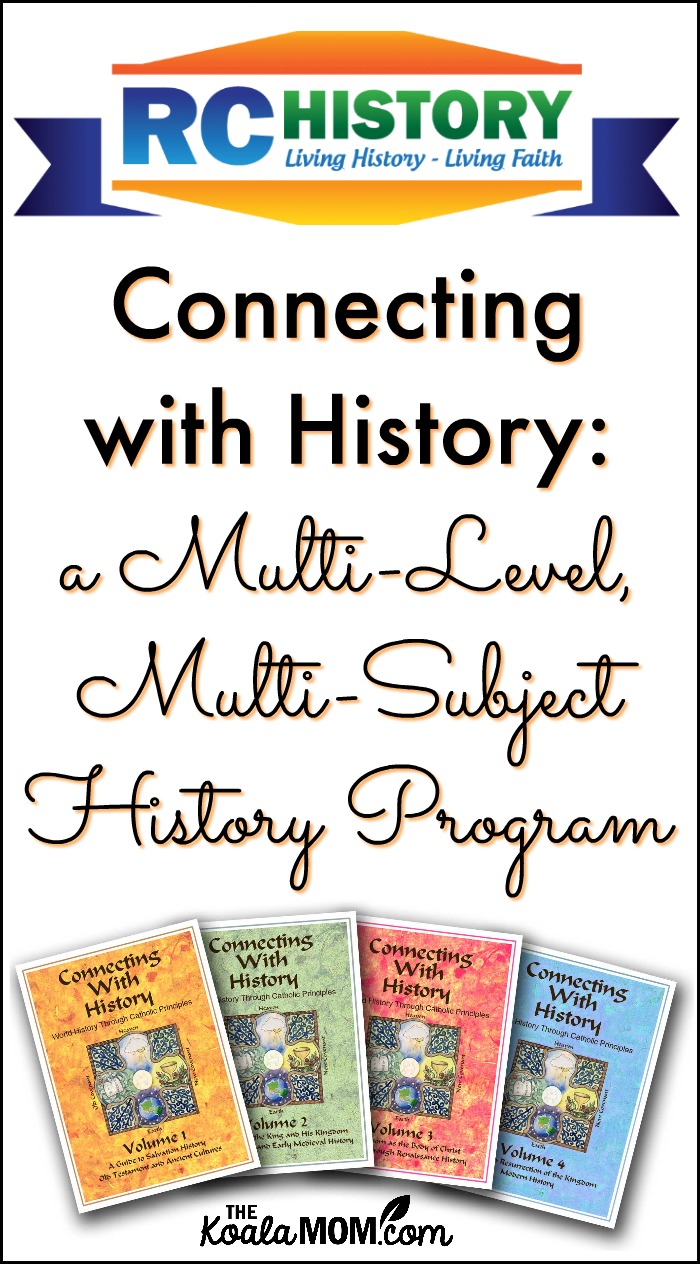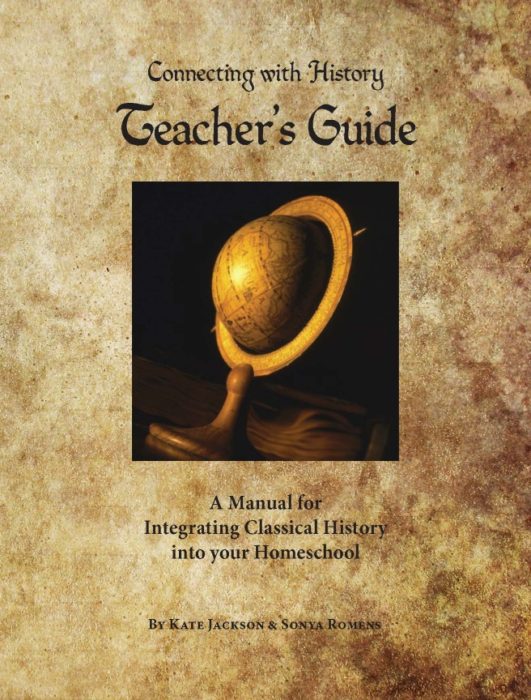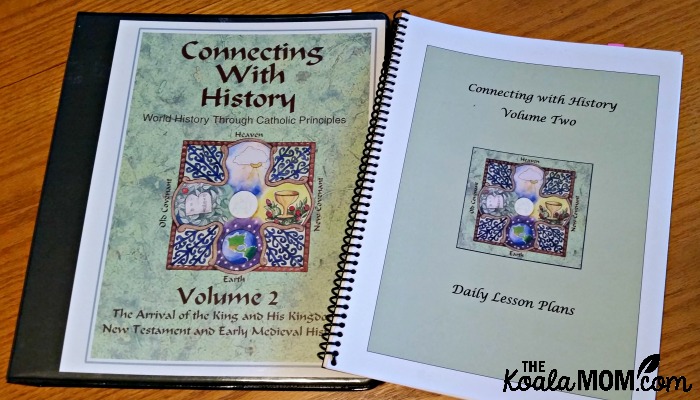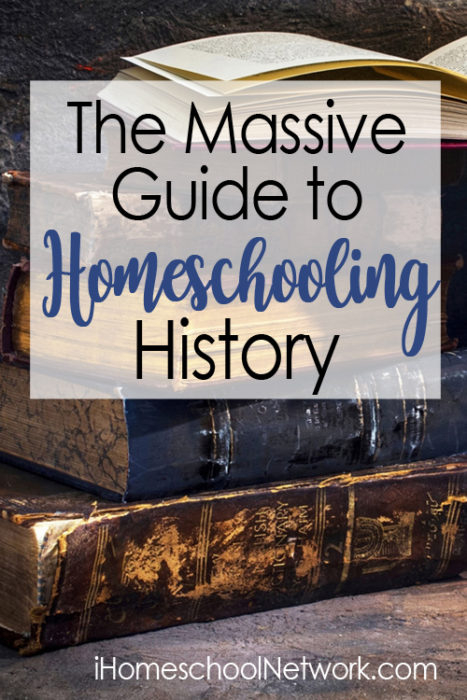Ask my girls what their favourite school subject is, and they’ll answer, “History!” And no wonder, with the interesting books and fun stories we’ve read with the Connecting with History program over the past two years. We’ve been time travelers to ancient cities and civilizations, deciphered hieroglyphs, and seen God’s people spread His word across the world. I can’t wait to see what we’ll learn this year (but I say that every year!).
I’m often telling homeschool friends about this amazing resource, so I’m excited to share with you about it as well. There’s so much to RC History that it’s hard to fit all the information into one blog post, but I’ll do my best to give you an overview of why we love it.

I first encountered RC History shortly after we moved to Vancouver. Another homeschool mom here hosted an information night for several of us who were interested in their Connecting with History program. She let us look over the syllabus, books, maps, etc, as well as her kids’ work. I was instantly intrigued by the program’s multi-level, multi-subject approach to education.
Connecting with History is a literature-based, comprehensive, Catholic history program. Using carefully chosen literature and other resources, children learn about peoples and civilizations of the past, from creation to the current day. Salvation history is taught alongside world history, showing God’s work in His people’s lives since the beginning of time. The past is brought alive, becoming fun and interesting for kids (as it should be).
Our Experience with Connecting with History
Of course, it’s one thing for the teacher to be excited about a subject. Do the students also love it? The answer is yes. From the very first book we opened for Connecting with History, the girls have enjoyed it as much as I have. Most of the books we’ve read are colourful and engaging, telling stories that ignite their imaginations.
Often after I’ve read the day’s assignment to them, I’ll find one (or both) of them back on the couch, reading the book again. In fact, our school routine last year improved when I began starting our day with History (sitting on the couch together reading) rather than Math (their least favourite subject). They frequently beg me to keep reading when we’re done the day’s chapter or section.
I mentioned that Connecting with History is a multi-subject program. Studying history makes much more sense when geography is added. As we study each country and civilization, we’ve also placed it on a map. The girls have seen civilizations spread out on the map from the Mediterranean. Many of the books we read include maps, helping them to place what we’re studying.
So now we’ve learned about history, religion, and geography with Connecting with History. With its rich selection of books, the program also covers our literature studies. Each unit includes poetry selections, which can be assigned to students for memorization or dictation. Until now, I’ve read aloud many of the books (both picture and chapter) to the girls. This year, I think I’ll start assigning more reading to them and giving them more writing assignments to accompany the books.
A Classical Approach to Education
Connecting with History is broken into four time periods:
- Ancient History & the Old Testament (creation to Jesus’ birth)
- Early Medieval & the Early Church (AD 1 to 1066)
- High Medieval to Early Explorers (1066 to 1600)
- American History (Columbus to the Civil War)
The program is also divided into four levels of study: Beginner, Grammar, Logic, and Rhetoric. Homeschoolers familiar with Classical Education will likely recognize these steps. In the Beginner Level (at which we are currently working), the topic is introduced. Students then return to the topic again at a higher level, digging deeper into the topic and increasing their knowledge and understanding.
By the time Sunshine reaches Grade 12 following the Connecting with History program, she should have covered each era of history at least three times. For example, she’d study Ancient History in Grade 1, return to it at a deeper level in Grade 5, and then cover it again in Grade 9. The first time she studies it, she’ll read a picture book based upon the Myth of Gilgamesh; in Grade 9, she might read the actual translation of the ancient text. I love glancing ahead in the syllabus and anticipating what we’ll be reading in a few years!
An Easy-to-Use Program
One of my favourite things about the Connecting with History program is that it’s a complete program. This makes it super easy for me as the teacher to use. The books are chosen for me, the lessons outlined, the student assignments suggested. Each Time Period comes with a syllabus, daily lesson plans, core texts, and literature selections. There are also additional resources available, such as the Teacher’s Guide, Map Trek CD-ROM and timeline cards.

In August, I click to the RC History website, select the Time Period and Level we’re studying, review the book list quickly to make sure I’m not ordering duplicates (some books are used for multiple Time Periods, so I don’t need to reorder them each year), and press order.
In September, I line our books up in our homeschooling cabinet in the order we’re going to read them (and tell the girls not to read ahead too much). I glance over the syllabus to see how many units are included, and estimate how much time we should spend on each unit. (We take about a month per unit, but that can vary slightly depending on the unit and the girls’ interest in it.)
On Monday mornings, I sit down with my planner, the syllabus and the daily lesson plans and plan exactly what we’ll read that week. The daily lesson plans let me see at a glance what we need to cover to stay on track, and I usually just copy that into my planner. I can also adjust the lesson plans for what’s happening in our week. For example, if we’re out for a field trip one day, then we might do extra reading the day before.
Because there are so many books involved, the program may seem overwhelming at first glance. I took a bit of time, before starting our first year with Connecting with History, to familiarize myself with the books and materials. Now, I absolutely love the way the program is laid out. I highly recommend using the Daily Lesson Plans, as they are such a time saver, especially if you are teaching multiple levels. The Syllabus and the Daily Lesson Plans both have multiple levels on the same page, so you can see at a glance what you are teaching each child.
It might be tempting to look at the list of books included in the program and think, “I could find those somewhere else.” I recommend ordering everything from the RC History website. You’ll save money on shipping by placing one order (RC History offers free shipping on orders in the US) and the RC History prices are comparable to other stores, including Amazon. You also get discounts for ordering book packages or multiple books. It’s also much easier to find books in one place than to shop around and keep track of where you are getting your books. And many of the books are used across multiple levels, or will be read and reread by your kids, so I recommend buying them rather than finding them at the library.
Plus, you are supporting a solid Catholic educational program. Sonya has put so much effort into this program, and it’s obvious in the resources and the books chosen. (Some year I’ll have to take a break from Connecting with History to study Canadian history, and I’m kinda dreading all the planning I”ll have to do to match the sort of level of history study we’re now accustomed to, thanks to RC History!)
Final Thoughts on Connecting with History
I can only say that I wish I’d Connecting with History earlier and started it when Sunshine was in Grade 1. It is our favourite subject by far—easy to use for me, interesting and fun for the girls. I love how we are covering so many learning outcomes just by reading good books.
So much of our world today is built upon the past, and an understanding of that past is important. Architecture, literature, faith, law, politics, and more go back to the days of early civilizations, and the girls are learning about that through Connecting with History. I even find that I’m learning a lot from the program, and I did a history minor in university!
I invite you to drop by the website and explore. If you have any questions about the program, feel free to ask me! You can also reach out to Sonya via the website if you’re wondering what exactly to order or which level is best for your student.
For more history resources by homeschoolers, check out:
I received compensation for this post, but all opinions expressed are my own.




12 Comments
I’d love a post on how you include Canadian history in Volume 4 (or even in general).
Hi Leslie – we haven’t done Volume 4 as currently it covers American history (rather than world history) and I’m not interested in spending a whole year on American history. 🙂 Instead, my friend and I tried to create our own Canadian history curriculum for “year 4” in the cycle. I wrote about that here: https://thekoalamom.com/2019/03/canadian-history-co-op/. It was, however, a LOT of work and made me appreciate RC History even more. We had a lot of fun for the first few months and burned out by Christmas. 🙂 I should work on a post about the resources we did use, though. This post might also help you: https://thekoalamom.com/2018/10/100-books-canadian-tween-girls/
If I start this with my 1st grader, then my next child will be 2 years after… can any child jump in at any point and it work? If that makes sense?
Hi Lauren, yes, absolutely! I don’t think that history needs to be started in Ancient Times to make sense for kids, although it’s great if you can. So you could either have your second child jump into the Third or Fourth Cycle with your oldest, or wait a year or two to start your second on history when your oldest returns to Ancient History (First Cycle). Then you’d likely have your first student working at the Grammar Level in Ancient History and your second student working at the Beginner Level. There are some books and activities they would share, and some they would be doing separately.
This year, I’ll have my oldest two (grades 6 and 5) doing Grammar Level Ancient History while my third (grade 1/2) jumps into history for the first time at the Beginner Level. 🙂 I do think it’s a great idea to jump in at Grade 1 with Ancient History, as it’s a bit easier to figure out the program while you’re only teaching one level (instead of trying to jump in with multiple students at multiple levels, which can get a bit overwhelming for some moms!). 🙂 Good luck! You can also reach out to RC History with any questions… they are great with tips and answers. 🙂
How long does it take you and the girls each day to cover the material? Any further thoughts now, two years after your review?
We LOVE love LOVE this history program!!! I’m excited to return to Ancient History this year and start covering the topics with them again, at a higher level. How much time we spend on it varies a bit, depending on how interested in the topic they are or what unit we’re in… I’d say twenty minutes to an hour. It’s really flexible… you can do as little or as much as you want (or as your child wants!). 🙂
Bonnie, this sounds wonderful! I would love to see their American HIstory curriculum as we are doing both American and Canadian History for the next two years. I will definitely check their website.
Thank you so much for sharing about it.
Ana – all our curriculum, when I was homeschooling, was from the States, so we got a LOT of American history and politics woven through it. I guess I got kinda tired of it… 🙂 I personally find Canadian history waaaay more interesting, but it’s harder to find good resources about it. I do want to cover American history with my kids, I just don’t want to spend a whole year on it. 🙂 I’m sure you’ll enjoy it! 🙂
I’ve never heard of this program before– it sounds like you are really enjoying it! Is modern history covered at any time?
Hi Alison – the Modern History unit is still being written right now. I’m hoping that it’s finished by the time we get there, as I’m not excited (as a Canadian) to spend an entire year on American history (maybe a month!). When the program is finished, students will have the option of doing American History or World History in Year 4 (as I understand the plan). Keep an eye on the website for details! 🙂
Sounds like an excellent program
I’ve been thoroughly impressed by it! 🙂 The girls and I both love doing history, and I’ve heard the same sentiments from my friends here in Vancouver who are using the program with their kids. 🙂